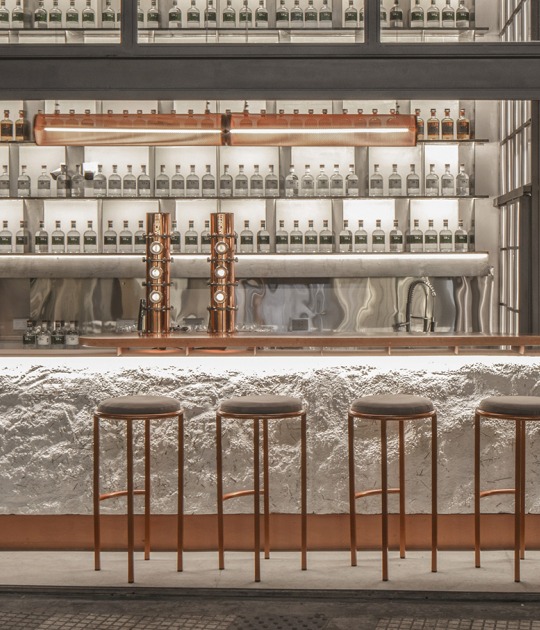The building follows the strategy of a sunflower, an intelligent, white façade is projected with mobile elements to reflect and protect the control room from solar radiation. In addition, it creates a central band of auxiliary uses that allows the organization of complementary uses that give the project uniqueness.

Organization and Operations Control Center for Auvasa. Photograph by Gabriel Gallegos Alonso.
Project description by Oiga Estudio
The new Center for Organization and Control of Operations (COCO) of the municipal company Autobuses Urbanos de Valladolid S.A. (AUVASA) arises from the need to expand its current facilities, in accordance with its new function as an intermodal mobility company, which integrates the management of transport and urban elevators, parking and public bicycles, services that have been subject to a profound technological modernization.
The main objective of this new headquarters is to reflect the new values of AUVASA, designing a technological and unique building with a vocation for representativeness, in which the comfort and efficiency of the work spaces are compatible with the criteria of sustainable design and optimization. of energy, through passive and active strategies.
The COCO expands and modifies the control area of the original AUVASA building, located at its eastern end, and whose semicircular floor plan has inspired, like a panopticon, the cylindrical shape of the new three-story building that responds to the program needs.

Organization and Operations Control Center for Auvasa. Photograph by Gabriel Gallegos Alonso.
The spaces are organized around a central band that houses the main structure of the building and the vertical circulation, toilets and auxiliary spaces. Dominating the environment, on the semicircular side of the ground floor is the double-height control room, presided over by a video wall, around which different sections of glass offices with different degrees of privacy and autonomy are organized. The second floor houses the management and board room. Towards the side of the warehouse-garage are the rest rooms and the rest of the offices. The central band is presented in exposed concrete, or with a wooden covering, depending on the spatial and acoustic needs of the spaces, forming a clear element of visual reference, and emerges at two ends of the façade in the form of mouths, that frame the main access and a communication window with the ship.
The building has been designed and built based on criteria of efficiency and comprehensive energy management, with passive measures supported by the generation of the volume itself: the first floor overlooks the ground floor, casting its own shadows that allow the lighting to be controlled. interior and overheating. Special attention has been paid to the control of lighting conditions in the control room, in relation to the lighting and air conditioning systems, to optimize their operation depending on the different solar radiation conditions.

Organization and Operations Control Center for Auvasa. Photograph by Gabriel Gallegos Alonso.
Some of the design criteria are:
• Reuse of the built footprint, transformed into an irregular cylinder, as a more efficient mechanism for implementation and minimization of energy losses, thanks to its form factor.
• With the strategy of a sunflower, an intelligent, white façade is projected with moving elements to reflect and protect the control room from direct radiation from the sun, optimizing thermal gains to an adjustable LED lighting system, and air conditioning, through air treatment units with heat recovery. In addition, a photovoltaic capture cover is projected facing southeast - coinciding with the hours of greatest intensity of use - which shapes the technical volume that crowns the building.
• The definition of a central band of auxiliary uses and circulation optimizes internal flows and minimizes the development of networks, providing flexibility for future modifications. In addition, it allows the organization of complementary uses around the control room, allowing agile decision-making in special situations.
• The semicircular plan favors visual dominance over the plot, the circulation of buses around the COCO and the visualization of the video wall. The central location of the latter also allows taking advantage of the thermal gains derived from the heating of the screens.
• Improvement of the environmental comfort solutions in the control room, both in terms of thermal-climatic, acoustic and lighting aspects.
The intersection of the new volume at the end of the existing nave allows the creation of rest spaces for administrative staff and drivers, which overlook the parked buses. This not only promotes better communication and integration, but also promotes a sense of belonging to the institution and its mission in improving the city's mobility. These and other values – commitment, technology and innovation – are reflected in a renewed institutional image. The design principles followed aim to minimize the environmental impact, improve AUVASA's internal processes, and the quality of the work environment,
COCO joins the process of improvement and outsourcing of the industrial estate in which it is located, contributing to the promotion of the institution it represents. Visible from the immediate environment, its image refers to the dovecotes of the province, and dialogues with the scale and materiality of the existing industrial architecture, without giving up a contemporary and expressive language.








































